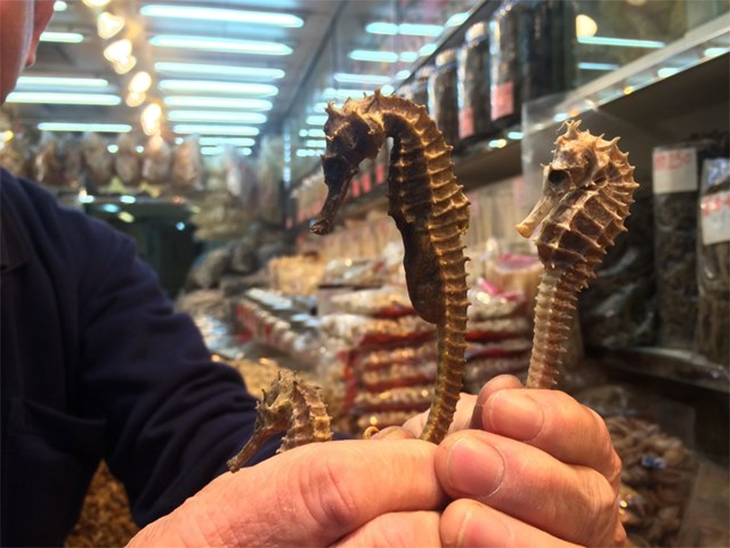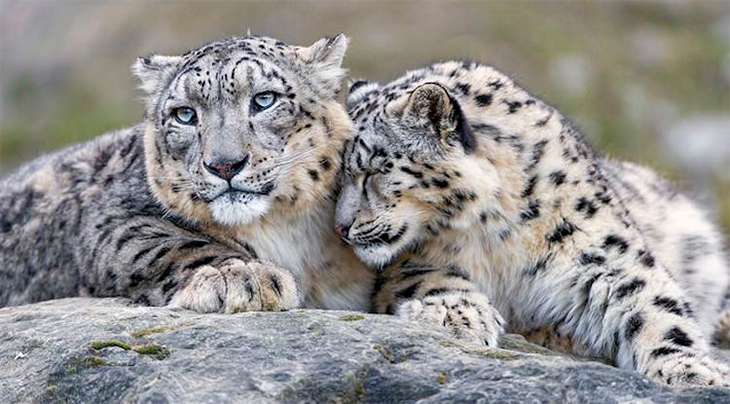By: Elizabeth Claire Alberts/The Dodo Gary Stokes is used to seeing animals in dried seafood shops in Hong Kong – fins from dead sharks, dead sea cucumbers, dead starfish. As a conservationist, it all upsets him, but he feels particularly distressed when he sees sacks of dried seahorses.

“The traditional Chinese medicine shops are full of sacks and sacks and sacks of pretty much everything from the oceans, but seahorses are certainly a part of it,” Stokes, the Southeast Asia director of Sea Shepherd Conservation Society, told The Dodo. “When you go [scuba] diving, you can see one seahorse, and the photographer goes crazy. But here, you see them in clear plastic bags, with a couple of hundred in each bag. You’re kind of numb because of the death around you.”

In mainland China, Stokes once visited an entire shop that just sold seahorses – and nothing else. Stokes estimated that there were hundreds of thousands – if not millions – of dead seahorses in that one store.

“They’re tiny,” Stokes said. “So imagine filling up a grocery shopping bag – how many would you get in there? And if you imagine a shop that’s maybe 8 meters by 8 meters [26 feet by 26 feet], and they’re just stacked up on all of the shelves, the volume is just mind-blowing.”

Stokes has good reason to be concerned. There are more than 40 seahorse species, and the International Union for Conservation of Nature (IUCN) lists many as either “threatened” or “endangered.” Some species don’t have enough data on them for scientists to even assess their conservation status.

Despite the seahorse’s vulnerable position, people are taking millions of them out of the ocean each year to use in traditional medicine, sell in the aquarium trade or even use as ornaments or tourist souvenirs.

It’s not just a few million being lost – it’s tens of millions, according to Amanda Vincent, a marine biologist, and director of Project Seahorse.
“There are no official global figures on [seahorse] fisheries, but from our fieldwork, we think in just 21 countries that we’ve been able to assess … about 37 million a year are being removed from the wild,” Vincent told The Dodo. “That number may turn out to be conservative.”

What’s even more astounding is that most seahorse species are actually protected through the Convention on International Trade in Endangered Species (CITES), which puts limitations on the trading and selling of these animals. Yet these nominal bans don’t seem to be doing much, Stokes said.

“They’re prohibited, so how come we have sacks and sacks and sack of them just in the shops here [in Hong Kong]?” Stokes said.

To make things worse, the captured individuals aren’t the only ones affected, Vincent explained. When people take seahorses out of the wild, their families are disrupted as well.
“Many fishes do come out in vast numbers from the oceans, and, in some cases, the wild populations can tolerate that,” Vincent said. “Seahorses, however, have a very elaborate form of parental care and a very structured social system.”

One of the most interesting characteristics about seahorses is that the males carry the babies.
“The female transfers eggs to the male’s pouch, and … the eggs are fertilized,” Vincent said. “Then they [the males] go through an elaborate pregnancy, providing food and nutrition and thermal control. And eventually, the male goes into labor and pumps and thrusts and shoves them all out again.”

Seahorses are not only good dads, they’re also good partners.
“Males and females in most species have permanent pair bonds, where they come together every day for prolonged periods,” Vincent said. “As soon as the male gives birth, the female is ready with more eggs, and off they go mating.”
Seahorses mate for life, and when they travel they hold each others’ tails.
Posted by Savvy Animal Lovers on Tuesday, March 14, 2017
But it’s not just traditional medicine and the aquarium trade that’s wreaking havoc on seahorse families. Seahorses are also inadvertently caught with certain fishing techniques, like seine and trawl fishing, according to Vincent.
“The vast majority of seahorses are caught in nonselective fishing gear, like trawls and seines,” Vincent said. “So banning export doesn’t mean they stay in the wild. We’re trying to deal with the fisheries removals … because there’s not much gain from conservation if you catch them still, but let them dry on the beach without selling them.”

Despite the challenge, Vincent remains optimistic. She hopes that more people will learn to protect seahorses – and the oceans themselves.
“Seahorses are in trouble … and I hope they can be good storytellers for all the small, obscure species that nobody pays much attention to at all,” Vincent said. “I think what we all need to do is to feel a responsibility for the ocean and to engage with the ocean and talk about it a lot. It can be difficult because most people think of the ocean as a swimming pool of water, but in fact, it’s full of the most extraordinary life, and seahorses are part of what’s wonderful.”

To help seahorses, make a donation to Project Seahorse or learn about other ways to help. If you scuba dive or snorkel, and are lucky enough to see a seahorse, share this information with iSeahorse, a data project run by Project Seahorse.




